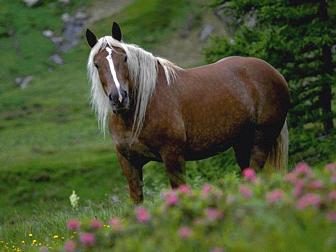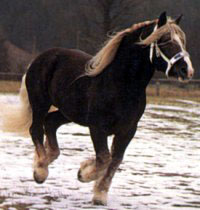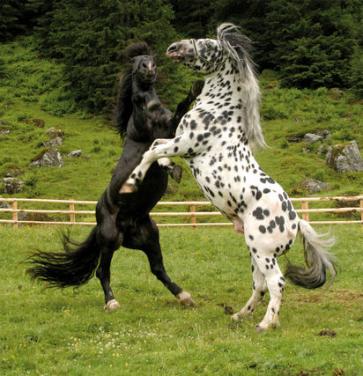



|
Noriker Qualities
The Noriker horse is bred in black, bay, chestnut, and spotted versions. They measure around fifteen hands in adult size and are very sure footed creatures. You can find them in Austria, Germany, Italy, Slovenia, Croatia, and other parts situated around the Adriatic Sea. They are commonly used for harness purposes, forestry, pack, and riding. They are also referred to by a few other names such as the Pinzgauer and the Norico-Pinzgauer.
Noriker Temperament
The Noriker horse is very quiet considering they are not a small animal. Some horses have the tendency to become very stubborn or challenging animals to train. This type is definitely not one of those variations. Instead, they are calm and biddable creatures. They can be used for children learning to ride, but usually most will aim for a smaller or shorter horse to begin with.
Noriker Appearance
The Noriker is a durable horse with a large head and common convex profile. They bode a unique coating that can be spotted in the snow and other poor weather conditions. Their look gives them opportunities to perform such tasks as pulling carriages and being in shows. They have well sprung ribs, loaded shoulders, hard feet, and a very bushy like mane. Their feet also have the same busy coated look, making them stand out from the crowd.
Noriker Upkeep
Caring for your Noriker horse is simple. They generally can be used as working horses all day long with very little maintenance. Their easy attitude makes them ideal for being an excellent riding choice.
Noriker History
The Noriker breed stemmed from Austria. They are often spotted in the mountains in southern areas of Austria. Many have aimed to continue breeding them in Salzburg. Their name derives from Noricum, a Roman Empire province that has taken over Austria. The Romans during these times were in great need of a horse that had the ability to travel well and for long distances without suffering from any fatigue. The Noriker horses were ideal for this type of activity. They were also used during the fifteen hundreds for work with the local monasteries. During the seventeenth century, the breeding rules had been altered drastically. They were then put through inspections after the year 1703. Most people interested in breeding horses at this time were seeking a lighter version of the Noriker horse that was ideal for riding and appeared more docile and elegant. Some have linked them to Roman scholars, but others have their own discovery theories, which included Celtic breeders. Neither of these theories have been proven to be fully correct thus far, but the horses have been enjoyed by both groups of people wholeheartedly. Currently, they are still well known for being an attractive and hardy horse worldwide.
|